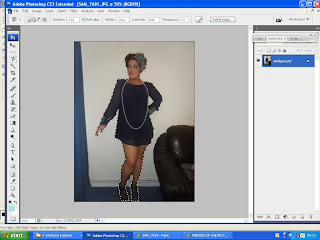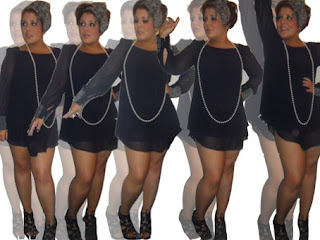This task consisted of me looking around Acland Burghley School (issue which my magazine is advertising) and taking pictures which I could then edit onto my magazine front cover and contents page to visually attract people through images. This is a feature which is used in many magazines and I will imitate successfully. When taking these photos, I had to focus on many issues. I made sure all images were taken in different locations, so students were visually aware of the inside and outside school area and therefore gained a clearer understanding and knowledge of the school area.
Here are my photographs...
This image is of the front of the school, clearly showing the Acland Burghley School logo which will welcome students, in a friendly way. The way I have captured the doors opening imitates how my magazine is persuadsive and invites students into the school itself. This image was taken from a low viewpoint which is emphasising how successful the school is that other schools (students, parents and teachers) look up to Acland Burghley. All these features in this image will succesfully advertise Acland Burghley in a positive light, attracting people into the school and magazine.

This is the second image I took, is of a hardworking student studying in a study/socialising area. This is giving insight into the whole of the school. The way the pupil is studying in an area which is used for socialising emphasises how determined Acland Burghley pupils are. This will attract people into the school and it is visualising the high grades. The student is facing away from the camera, almost showing how determined and how much studying and grades mean to her, yet the fact she is with her friends enhances socialising is also a key factor in the school environment.

My third image was captured outside of the school, emphasising the inside and outside look. I purposely captured the image when nobody was there, this holds a negative effect as it does not successful show the school or pupils itself. However, it does show where the pupils socialise and aspects of the school which are made for this purpose. The benches and grass are a nice way of pupils sitting and socialising or doing work outside of the school, this would attract pupils and parents as it is friendly way and the atmosphere, despite no pupils in photograph still manages to look inviting.

This is another outside school photograph, yet a different surrounding. When taking this photograph, I wanted a distorted feel. The way, in which benches look smaller, imitate the different ages the school goes too. In this photograph, I am showing where pupils eat for lunch and break, it is an amazing place, with curve benches and tables giving a friendly feel, this is successfully attracting people into the school as a whole, showing all positive lights.
This image differs from the above, yet it defines the school and arts status. As the school itself is an arts school, this image visualises this status. The way in which the paintbrushes are placed in different ways, of different sizes, emphasises the diversity in the school. This photograph almost makes connections with typography; as the way letters are styled appeal to certain target audiences, the way the paintbrushes are placed here, achieve this too.

This image is also taken in the school common room, place for socialisation and study. It is successfully capturing different pupils doing differen things, differing from reading to chatting. This emphasises diversity in the school society. The way in which one student is reading enhances how determined Acland Burghley students are. However, I feel there is no focus in this image. I also believe the way students backs are faced against the camera shows students in a negative light which is something I want to reject in my photographs and therefore, I will not use it in my prelim task.
Evaluation of photography
While taking these photographs there were many features that I had to take into consideration in order to produce the perfect photo, successfully capturing the needs. One of these features were camera angel. I feel my images are successful and do show a range of diversity, however, this diverse feel could of been portrayed further if I had focused more on camera angel, making different shots. For example, if I had used more mid-shots and long-shots, differing from each other, this would of been diverse in itself, impacting on overall diversity to imitate the diversity in the school. I believe I have used the feature of lighting well; my photographs are of good quality as the light balance is clear. In areas, I have used camera focus well and in others, not so well. For example, my photograph of paintbrushes the focus is clear, whereas the photo of backs of students is not so clear. All these features are what I have learnt and therefore will be able to produce images of a higher standing in my music press magazine.
 Once I had the base of my images to work from I then opened my image on Adobe Photoshop, where I used the magnetic lasso tool to crop around the figure, to define the body. Once all the figure was lassoed, I copied and pasted it onto a different document. I done this for all my five images.
Once I had the base of my images to work from I then opened my image on Adobe Photoshop, where I used the magnetic lasso tool to crop around the figure, to define the body. Once all the figure was lassoed, I copied and pasted it onto a different document. I done this for all my five images. I then duplicated the layer in which the figure had been pasted on, and decreased the opacity. I then hid this beneath the orginal image. This acted like a shadow of the image. This could also been seen as re-enacting the music genre, as pop can be seen as loud and the shadow can be seen as echoing this. I continued this process for every image.
I then duplicated the layer in which the figure had been pasted on, and decreased the opacity. I then hid this beneath the orginal image. This acted like a shadow of the image. This could also been seen as re-enacting the music genre, as pop can be seen as loud and the shadow can be seen as echoing this. I continued this process for every image. This is my outcome of dancing image. This was a time consuming process, yet I believe worth it. After each image had been made and duplicated, I rearranged the composition, so only a limited amount of white background was seen. I believe this image works well and emphasises my chosen music genre. The shadowing reinforces music itself and the sound. This image will have a positive impact to my music press magazine.
This is my outcome of dancing image. This was a time consuming process, yet I believe worth it. After each image had been made and duplicated, I rearranged the composition, so only a limited amount of white background was seen. I believe this image works well and emphasises my chosen music genre. The shadowing reinforces music itself and the sound. This image will have a positive impact to my music press magazine.


































